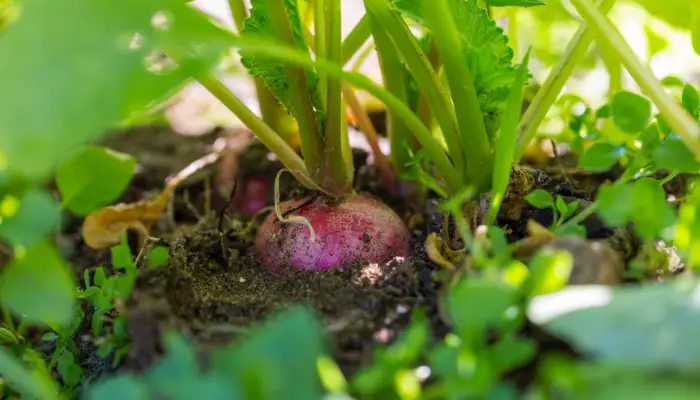How Much Water Do Beans Need?
Beans are a popular and nutritious crop that can be grown in many climates and soil types. However, one of the most important factors for successful bean production is water. Beans need adequate and consistent water to grow healthy and produce a good harvest. But how much water do beans need exactly? And how often should you water them? In this post, we will answer these questions and provide some tips on how to water your beans properly.
How much water do beans need per week?

According to various sources, beans need about one inch of water per week. This means that you should provide enough water to moisten the soil to a depth of four to six inches. However, this amount may vary depending on the type of beans, the stage of growth, the weather, and the soil conditions. For example, bush beans may need less water than pole beans, and beans may need more water when they are flowering and setting pods than when they are just sprouting. Also, hot and dry weather may increase the water demand, while clay soil may retain more water than sandy soil.
How Often Should You Water Your Beans?
The best way to determine how often to water your beans is to check the soil moisture regularly. You can do this by inserting your finger into the soil up to the second knuckle. If the soil feels dry, it is time to water. If the soil feels moist, you can wait until it dries out a bit. You can also observe the appearance of your plants. If they look wilted or yellow, they may need more water. If they look healthy and green, they are getting enough water.
As a general rule, you should water your beans deeply but infrequently. This means that you should water them thoroughly until the water drains out of the bottom of the container or runs off the surface of the ground, but not so often that the soil stays soggy or waterlogged. This will encourage the roots to grow deep and strong and prevent diseases and pests from attacking the plants. A good frequency to water your beans is once or twice a week, depending on the weather and the soil type.
How Do You Water Your Beans Properly?

There are different methods to water your beans, such as sprinklers, hoses, drip irrigation, or soaker hoses. Each method has its advantages and disadvantages, and you should choose the one that suits your garden and your preferences. However, there are some general tips that apply to any method:
- Water in the morning or evening, when the temperature is cooler and the evaporation is lower. Avoid watering in the middle of the day, when the sun is strong and the water loss is high.
- Water at the base of the plants, not on the leaves. This will reduce the risk of fungal diseases and leaf burns. If you use sprinklers or hoses, make sure to water early enough so that the leaves can dry before nightfall.
- Use mulch around your plants, such as straw, grass clippings, or wood chips. This will help conserve moisture, prevent weeds, and moderate the soil temperature.
- Do not overwater or submerge your beans. Overwatering can cause root rot, blossom end rot, and split pods. Underwatering can cause stunted growth, poor pod formation, and reduced yield.
How Do You Know When Beans Need Water?
You can check the soil moisture by inserting your finger into the soil up to the second knuckle. If the soil feels dry, it is time to water. If the soil feels moist, you can wait until it dries out a bit. You can also observe the appearance of your plants. If they look wilted or yellow, they may need more water. If they look healthy and green, they are getting enough water.
How to Prevent Pests From Attacking Beans?

There are different methods to prevent pests from attacking your beans, depending on the type of pest and the environmental conditions. Some general tips are:
- Rotate bean crops from year to year to confuse and thwart bean pests.
- Plant beans in full sun in late spring, two weeks after the last frost. Bean seeds do not tolerate cold, soggy soil and may be stunted or fail to appear altogether.
- Plant bean seeds 1 inch deep and 2 to 4 inches apart.
- Water in the morning or evening, when the temperature is cooler and the evaporation is lower. Avoid watering in the middle of the day, when the sun is strong and the water loss is high.
- Water at the base of the plants, not on the leaves. This will reduce the risk of fungal diseases and leaf burn.
- Use a mulch around your plants, such as straw, grass clippings, or wood chips. This will help conserve moisture, prevent weeds, and moderate the soil temperature.
- Do not overwater or underwater your beans. Overwatering can cause root rot, blossom end rot, and split pods. Underwatering can cause stunted growth, poor pod formation, and reduced yield.
- Plant a trap crop of zinnias or marigolds away from the veggie garden to lure the beetles to tastier fare. Also, interplant garlic or chives among the beans. The strong odor will often deter the beetles.
- Keep the area around the bean plants free of detritus and remove any damaged or diseased foliage.
- Spray the foliage and vines of your bean plants to knock insects off of the plants. This method of treatment works well on aphid colonies and spider mites.
- Place strips of aluminum foil around the base of bean plants to prevent thrips from attacking the blossoms of bean plants and preventing pollination.
- Spray your plants with neem oil, stinging nettle liquid, or vinegar to deter or kill various pests, such as pollen beetles, pod borers, pod bugs, leaf miners, wireworms, armyworms, cutworms, and cornworms.
- Remove and discard any infected plants to prevent the spread of bacterial blights, mosaic viruses, bean rust, stem anthracnose, and sclerotinia fungus.
Conclusion
Water is essential for bean growth and production, but it is also important to water them correctly. Beans need about one inch of water per week, but this may vary depending on the type of beans, the stage of growth, the weather, and the soil conditions. You should water your beans deeply but infrequently, and check the soil moisture regularly. You should also water in the morning or evening, at the base of the plants, and use a mulch to conserve water and protect the soil. By following these tips, you can grow healthy and productive beans in your garden.
Frequently Asked Questions About How Much Water Do Beans Need
- Q: How much water do beans need per week?
- A: Beans need about one inch of water per week. This means that you should provide enough water to moisten the soil to a depth of four to six inches. However, this amount may vary depending on the type of beans, the stage of growth, the weather, and the soil conditions.
- Q: How often should you water your beans?
- A: You should water your beans deeply but infrequently. This means that you should water them thoroughly until the water drains out of the bottom of the container or runs off the surface of the ground, but not so often that the soil stays soggy or waterlogged. A good frequency to water your beans is once or twice a week, depending on the weather and the soil type.
- Q: How to water your beans properly?
- A: There are different methods to water your beans, such as sprinklers, hoses, drip irrigation, or soaker hoses. Each method has its advantages and disadvantages, and you should choose the one that suits your garden and your preferences. However, there are some general tips that apply to any method:
- Water in the morning or evening, when the temperature is cooler and the evaporation is lower. Avoid watering in the middle of the day, when the sun is strong and the water loss is high.
- Water at the base of the plants, not on the leaves. This will reduce the risk of fungal diseases and leaf burn. If you use sprinklers or hoses, make sure to water early enough so that the leaves can dry before nightfall.
- Use a mulch around your plants, such as straw, grass clippings, or wood chips. This will help conserve moisture, prevent weeds, and moderate the soil temperature.
- Do not overwater or underwater your beans. Overwatering can cause root rot, blossom end rot, and split pods. Underwatering can cause stunted growth, poor pod formation, and reduced yield.








